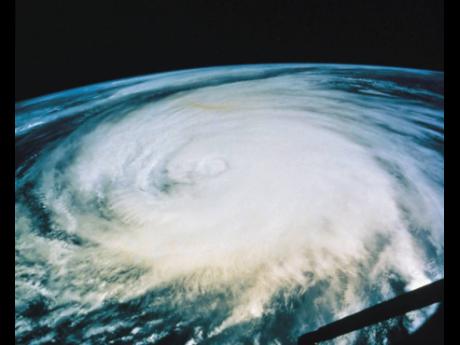Editorial | Preparing for El Niño
The likelihood of a moderate hurricane season this year is welcome news for the Caribbean. But as the experts have warned, that possibility is no reason for the region to let its guard down. The very phenomenon – El Niño conditions – that might contribute to fewer hurricanes could help to fuel more ferocious ones.
And as The University of the West Indies’ Global Institute for Climate-Smart and Resilient Development (UWI GICSRD) and the Caribbean Institute for Meteorology and Hydrology (CIMH) warned in their joint statement last week: “...It only takes one hurricane or storm to cause immense economic setbacks to an impacted country, and sometimes the entire region.”
Furthermore, El Niño is generally associated with drier, hotter conditions, including prolonged drought, such as Jamaica is currently experiencing. That could become worse if this El Niño is entrenched.
Jamaica’s authorities, therefore, must simultaneously plan for the mitigation of storm and the impact of drought, while preparing to help vulnerable people cope with the effects of heatwaves.
The annual Atlantic hurricane season runs from the start of June to the end of November, when weather phenomena that begin off the coast of Africa may cross the Atlantic and develop into storms and hurricanes that are sometimes devastating to the Caribbean.
WARMER WATERS
This year, forecasters at America’s National Oceanic and Atmospheric Administration’s (NOAA) Climate Prediction Center expect a “near normal” season. There is a 40 per cent chance that events will fall in that range, and a 30 per cent possibility that there will be fewer storms than normal. The forecasters also gave a 30 per cent chance to things being above normal, with storms exceeding the average amount for the season.
NOAA’s prediction is for between 12 and 17 named storms, or those with winds of 39 miles per hour (mph) or above. Of these storms, about five are expected to become hurricanes – storms with wind speeds of 74 mph or higher. Between one and four of the hurricanes are forecast to go beyond Category Two events, thereby having wind speeds of over 111 mph.
“The upcoming Atlantic hurricane season is expected to be less active than recent years, due to competing factors – some that suppress storm development and some that fuel it – driving this year’s overall forecast for a near-normal season,” NOAA said in its forecast.
The major difference this year is the likely return of El Niño, after three years of La Niña when the waters of the Pacific were cooler.
“La Niña ended in March and the ocean temperatures in the Pacific, both at the surface and a few hundred metres below, are warming so quickly that many major atmospheric centres globally are not only warning of emerging El Niño conditions, but suggesting it may be a ‘significant’ event,” said UWI GICSRD and CIMH in their statement.
El Niño events are often associated with hot, and often very dry spells in the Caribbean. However, a warmer Caribbean Sea may eject more moisture in the air, lending to the conditions for storms, thus adding to the uncertainty about this year’s hurricane season.
“In addition to contributing to very hot days and nights and more heatwaves, the very warm Caribbean Sea may provide windows of opportunity for a very strong hurricane to develop, notwithstanding El Niño’s dampening effect,” the research institutions said.
SUPPORT FOR THE VULNERABLE
As usual, we expect the Jamaican authorities, especially the Office of Disaster Preparedness and Emergency Management, to be prepared for all eventualities. Hopefully, drains, especially those in flood-prone areas, have been cleaned, to lessen the chance of catastrophic flooding should significant weather events develop. Shelters must also be prepared and ready.
But the possibility of heatwaves adds another layer to the preparation to be ready to support at-risk people. This must be placed on the Government’s agenda.
The COVID-19 pandemic highlighted serious physical and psychological vulnerabilities among Jamaica’s elderly, many of whom live in marginal circumstances with little support. At the height of the pandemic, the health ministry announced a community-based mental health/service support corps for older people.
It is not clear, with the receding of COVID-19, if this scheme has been sustained. If it was not, it should be reactivated. If it still exists, it should be widened and strengthened to include support for people who may be vulnerable to the effects of heatwaves. They must benefit from regular, organised outreach.
Given the prospect of a prolonged drought, we remind the administration of the good sense of mandating water-harvesting capabilities in all new major real estate developments and multi-family complexes. Merely rationing water in dry times is not sufficient.

